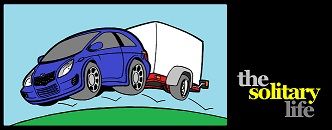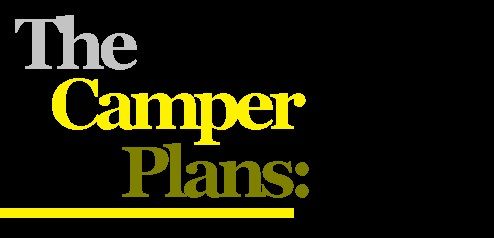
The camper project wasn't a one-design, one-build sort of scenario (although I'd like to think that it was). Rather, I went through a series of design studies until I came up with a design that would work for my specialized needs. Thus, the whole program ended up being a more "evolutionary" project than I had originally intended, as shown by the sequence of design studies below.
The base requirements were as follows:
- The camper had to be easily towed by my "Econobubble" of a car (a 2008 Yoyota Yaris hatchback, with the 1.6L engine/automatic transmission powertrain options), which meant that...
- The total weight of the camper had to be under 2000 lbs (the maximum towing capacity of this particular Yaris)... but preferably, under 1000 lbs, loaded. I didn't want to test the car's maximum towing capacity too much, so I figured that keeping it under half-capacity at all times would be pretty safe, and easy on the car..,
- I wanted the camper to fit on a heavy duty Harbor Freight utility trailer... which meant that the camper would more than likely be 32 square feet in size (4' x 8', which is the size of the utility trailer bed),
- It had to be inexpensive (I only had about $1500.00 allotted for my budget),
- I wanted to maintain an average of 30 mpg, towing the trailer on the highway (the Yaris gets 32 city/37 highway, on average, sans trailer),
- I wanted a standard, twin mattress, because I'm sick of constantly repairing inflatable mattresses... and,
- I needed room for all of my snowboarding gear inside the camper, including two fully-set-up snowboards in the 160cm-190cm range, all of my clothing, three backpacks, a stove, a portable grill, two toolboxes, books, toiletries, as well as the mattress, pillows, and my sleeping bag.
That was a pretty tall order. Here are the design candidates:
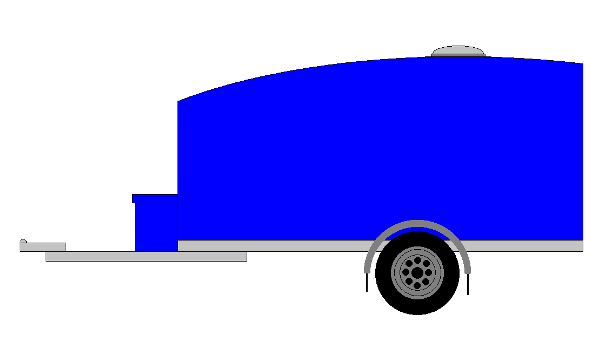
The first design that I came up with, is this nifty, aerodynamic, blue shell on a silver trailer frame... which would have matched the car nicely.
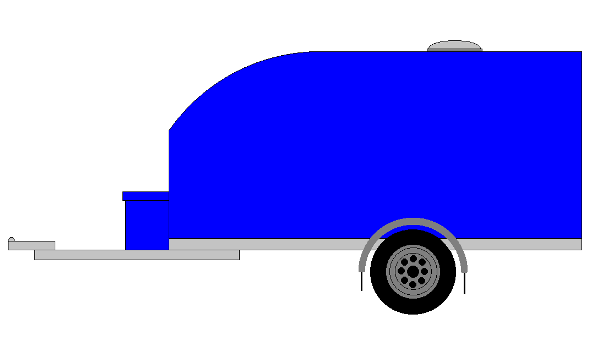
Right away, though, I decided that having a simple, square back would give me a simpler door design, more rear headroom, and a bit more usable interior volume.
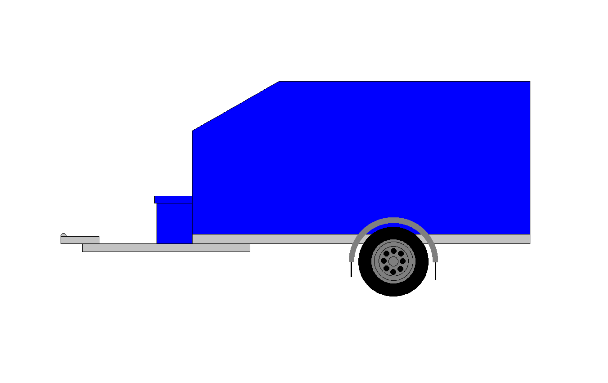
The next design simplified the overall profile even further, by relegating everything to simple angles and straight lines.
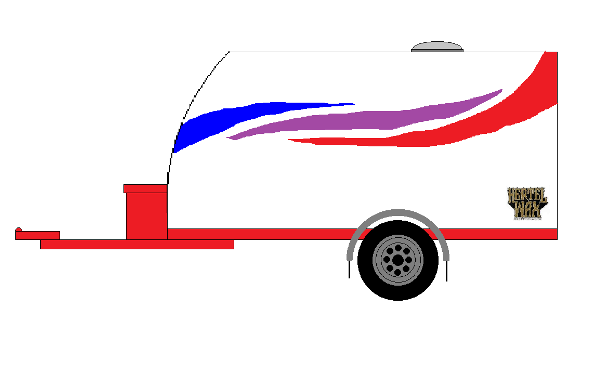
Ultimately, I decided (out of laziness) to leave the trailer it's stock red color, which changed the colorway of the overall design to this blue-purple-red over white scheme... which was meant to tie the car color to the trailer color in a creative manner. This design further explored a curved nose, which looked weird to me, for some reason.
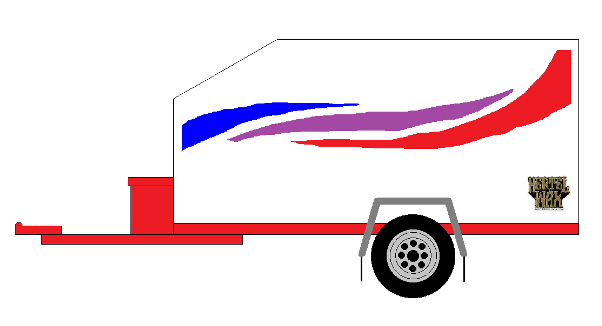
Thus, this design reverted back to the angular features- plus nifty, jeep-style fenders.
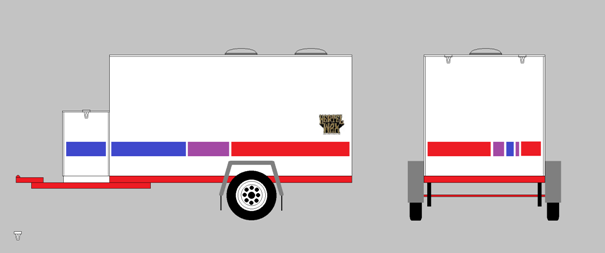
The final exterior design was an even simpler, rectangular profile that utilized full-size plywood sheets almost exclusively, with a minimum of cutting... and even more importantly, the fewest possible number of seams and joints (to spring leaks). The paint scheme has also been simplified down to a multi-tone stripe around the perimeter of the shell. My only worry about this final design was the very large presented frontal area, which certainly wouldn't help the aerodynamics of it one damned bit... but on the other hand, I was hoping that the small size of the camper would largely be blanketed by the car, itself- and as such, the blunt shape of the shell wouldn't be much of a problem. At the end of the day, the aerodynamics of this design did indeed suck; a quick, cheap, and temporary air-deflector did wonders for my fuel efficiency- but more on that, later.
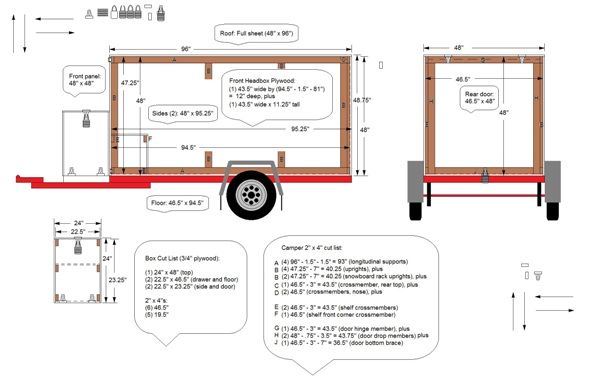
This is the "cut list", aka, "cutaway drawing" of the internal design. Note the small box inside the trailer, near the tongue; that's a full-width headboard (for the mattress) that doubles as interior storage. The vertical beams are for the internal and external snowboard racks, and the front utility box (on the tongue, itself) is for storage of grills, stoves, propane tanks, etc. The only change that I made to this design, was using 5/8" BC plywood, instead of the called-for 3/4" BC. Home Depot was out of the 3/4" the day that I went shopping for the wood... and I figured that, at the very least, stepping down to 5/8" plywood might save me some (much needed) weight (and money).
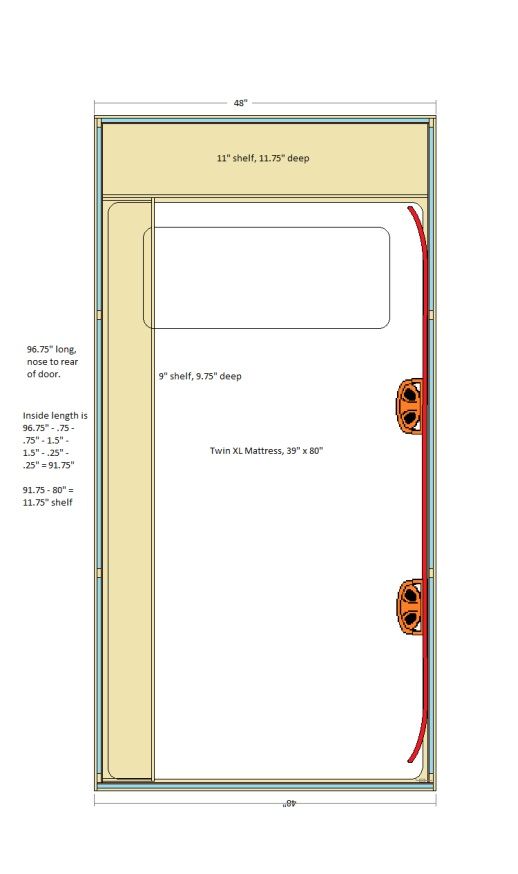
This is an inside view of the camper shell, from above; the tongue would be at the top of this schematic (if it were shown). Note the snowboard hanging on the passenger-side wall, and the full-length shelf along the driver-side wall. Originally, there was supposed to be a shelf across the nose of the shell as well, directly above- and, at the same width and depth of- the headboard cargo box. Interference with my space heater (and, my poor head) required that this shelf be deleted in pretty short order.
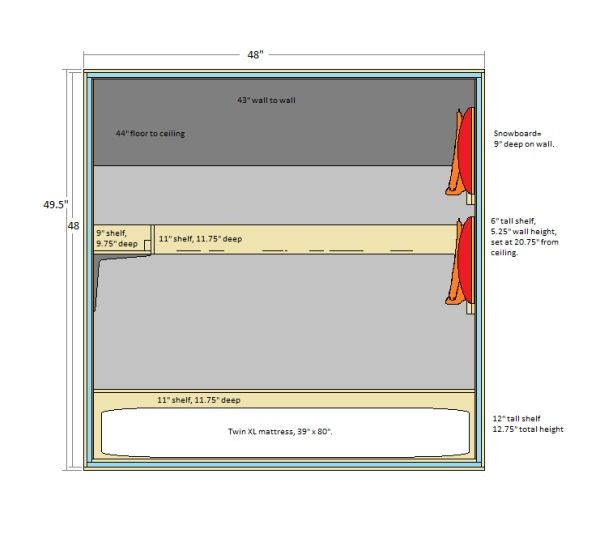
This is from the rear door, looking forward. Note the snowboards hanging vertically on the wall, the headboard cargo box, and the [deleted] shelf across the nose of the trailer.
